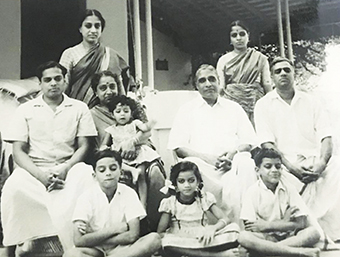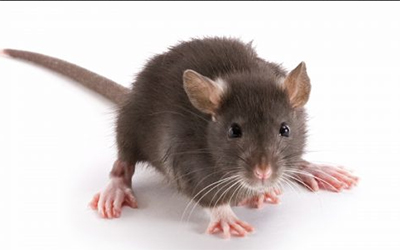Sundararajan of R.S.Puram was an advocate, corporate executive and a consultant later. Now he leads a retired life with his wife Lalitha, a mathematics tutor. His wife has spent time in several cities while growing up. It is a pleasure to catch up with the lively couple. The house is full of books and curios. Sundararajan has retained a lot of information about his forebears. Perhaps he could record his stuff on http://www.lumhaa.com. This interesting memory site is promoted by Shreya Sekhsaria, a girl who grew up in Coimbatore. The husband and wife believe in the adage – A place for everything and everything in its place.
Lalitha has recorded a lot of information in a couple of note books. She used to make notes in consultation with her mother in law Nagalaksmi. The father of Sundararajan, N.V. Narayanaswamy was a senior person in the electricity sector and had served in Bihar too. His attention to power cuts via his electric table clock and the meticulousness displayed by him during the Koniamman Temple Car Festival are legendary. Lalitha’s mother Manorama is domiciled in the USA and happens to be the daughter of Sundaresa Iyer, Chairman Periyakulam. Her father Ramamurthy hails from Thenkarai across Sholavandan. The famous actor T.R.Mahalingam was from the same place.
Both Lalitha and Sundararajan have visited diverse places. They have had tough travel experiences too and it was during a visit to Kedarnath. The couple are an amphora of information. Sundararajan had grown up in Race Course and also with his great great grandmother Gauri Patti in Raja Street in the forties and fifties of the twentieth century. He remembers the old cricket days very well. The Jolly Brothers team, Jai Hind team etc., are still fresh in his mind. The CSI ground in Race Course had served as a cricket field for the boys then. J.Balagopal, the second son of Dr.N.Jaganathan of the famous TB Sanitorium was his friend and Sundararajan remembers his well maintained cycle.
Sundararajan was born at the time of the second world war and was a small boy when our country got free. His stories about old Coimbatore and the shortages that used to recur those days are thought provoking. He states that life was simple. One could earn a little money. However opportunities were not many. The country had been impoverished due to colonial rule. He quotes from a book written by Lala Lajpat Rai in 1917.
Shortages seemed to have continued for some decades and the anecdotes given by Sundararajan gives us a fair picture. They used to wait years for getting a phone line. Cars and scooters had to be booked first. His scooter had taken several years. The monopoly enjoyed by the Government had been extended into the private sector through the licensing schemes. Acts like the MRTP etc., and departments like Controller of Capital Issues etc., had come in the way of freedom of action. Entrepreneurship was in the wane and money could not buy. Several departments were had names like Authority, Controller etc.,
Sundararajan remembers going shop by shop in Chennai during his student days in order to buy 10 kilograms of sugar at the time of his sister’s wedding more than 55 years ago. Each shop would just part with one kilogram of sugar. Finally the owner of Seetharama Vilas had helped by organizing one sack of sugar for the wedding. India had been following the Russian model of planning and development for several years in succession. Economic ideology could not change the life of the people. The tradition and culture of India had been diverse. It had appeared to be orthodox but had been liberal in reality for it existed in a diverse form. Several languages, life styles, approaches to praying to the same deities, diverse ways of celebrations of festivals and marriages had been the order of the day. A one size plan had perhaps not fit the people of such a vast and diverse country. They had always been changing and evolving gradually and naturally.
“I booked my scooter in 1971 and got it in 1980! The oil companies were Burmah Shell, Caltex and EVOC. I still remember paying Rs.325 for my Favre Leuba from Zimson Watch Company. My elder brother Dr.Dasarathi had got a job for Rs.1100 per month long ago. It was a pretty steep income in 1958. He served at the prospecting division of Standard Vaccum Oil Company (SVOC) which later on came to be known as ESSO (Standard Oil). This reincarnated into Hindustan Petroleum after nationalization. There existed an ESSO pump in Peelamedu and the bus stop came to be known after the bunk. It used to cost us less than Rs.5 to fill up the fuel tank of the scooter. My Upanayanam was another important occasion for me and my aunt Padmavathi, wife of N.V.Krishnaswamy Iyer gave me gold chain that day. Those were days when people respected each other. They were happy and content with just a little. We were yet to be engulfed by import of thoughts which were against Indian ethos. Besides all this India had just become free and it was a great thing. People were not avaricious too for being like that was foreign to us,” smiled the septuagenarian. 
Kerosene was known as Krishna oil. Sundararajan spoke about the breakfast shop near the Theppakulam Venugopala Krishnaswamy Temple on Raja Street. One could get one idli for half an anna and it was just Rs.1 for 32 idlis. An uppuma would cost about one and a half annas in that place. Chutney had been the accompaniment. One could eat there or order a ‘take away’.
Bombay Anand Bhavan (Opposite to S.Bheemiah Chetty Cloth Shop on Big Bazaar Street) used to serve idlis dipped in sambar only during the evening hours. One would have to pay 4 Annas per plate (2 pieces). Youngsters were known to order for one plate, eat slowly and while away their time by simply staring into the street. India Coffee House (ICH) was located near a property belonging to N.V.Krishnaswamy Iyer, the uncle of Sundararajan. Today it is the Bank of Baroda building. “A coffee at ICH was 16 naya paise. Those days one omlette was 25 paise. Badam halwa was all of 4 Annas in C.S. Hotel. It would get sold out very fast. On ceremony days we would given money to get lunch for ourselves. It was 2 Annas per head. My cousin N.K.Vasudevan and myself would eat 2 dosas each. A dosa used to just cost 1 Anna at Mangalore Café. We remember the old unit of currency Dambidi even today. 3 Dambidis had made quarter Anna and four quarter Anna were one Anna. 16 Annas made a Rupee long ago,” recalled Sundararajan. He had worked in Chennai (Simpsons) those days and was accustomed to having something everyday at the Drive Inn (Woodlands).
“We used to have one basundi which costed us One Rupee at the Woodlands Drive Inn during our college days. And one masala dosa and one coffee used to just cost Rs.1 then. It was our monthly treat at Chennai during the student years.
I remember our days when my father served in Bhusawal in Maharashtra. We had to struggle to get one kilogram of coffee. One could not get things even by paying money. Shortages were galore,” remembers Lalitha who has done her B.Sc., B.T from Chennai. The fresh yesterday like memories of Lalitha and Sundararajan are interesting to the core. Their casual approach makes it very interesting.
—Rajesh Govindarajulu
Where Queues And Shortages Were A Way of Life




